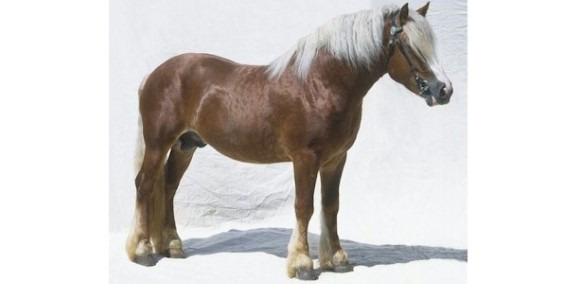Dole Gudbrandsdal (also known as Dolahest or Dole) horses
originated in the Gudbrandsdal Valley near the North Sea coast of Norway. It is
likely that the Friesian played a part in the breeding of the Dole. The
Friesians traded heavily with Britain, Norway, and the Rhine Delta during the
period from 400 to 800 A.D.
The Dole horse of today is found in two types: a heavy work
horse and a light draft horse (the cold-blooded trotter). The difference
between the two types has been greatly reduced in recent years due to
interbreeding between the types. This interbreeding is now becoming very common
and the breed is becoming very uniform.
The heavy type of Dole horses are tested for pulling power
and trotting when presented for grading. X-rays of the knee and lower leg are
taken in lighter trotting type, and animals with defects are disqualified for
breeding. Stallions of this must have achieved satisfactory results on the
track before being used as a stud. Three year olds may be issued a temporary
stallion license if their conformation, breeding and trotting ability are
acceptable. The quality of Dole horses have improved during the last several
years due to the organized selection of breeding stock.
Bay or brown are the predominate colors of the Dole horses
but black and chestnut are also fairly common. There are a few grays and duns.
Some have white markings on their head and legs, especially among animals of
the trotter type.
Dole
horses are one of the smallest cold bloods. They have an excellent trot and
great pulling power. They are agile and active and show great stamina.
